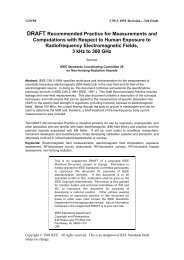An introduction to the quark model
An introduction to the quark model
An introduction to the quark model
Create successful ePaper yourself
Turn your PDF publications into a flip-book with our unique Google optimized e-Paper software.
Few-charge systems His<strong>to</strong>ry of <strong>the</strong> <strong>quark</strong> <strong>model</strong> Mesons Baryons Multi<strong>quark</strong>s and o<strong>the</strong>r exotics Outlook<br />
Systematics of (m +<br />
1<br />
, m+<br />
2 , m−<br />
3 , m−<br />
4 )<br />
<strong>An</strong>y state with m3 = m4 is stable. Why? Two degenerate<br />
thresholds.<br />
In particular, (m + , m + , m − , m − ) is stable (positronium molecule<br />
and variants)<br />
What about two masses?<br />
(M + , M + , m − , m − ) improves stability.<br />
(M + , m + , M − , m − ) spoils stability. It becomes unstable for<br />
M/m 2.2 (or, of course, M/m 1/2.2)<br />
So, starting from <strong>the</strong> doubly-symmetric (m + , m + , m − , m − ), and<br />
breaking<br />
Charge conjugation,<br />
or Particle identity<br />
does not produce <strong>the</strong> same result. Why?<br />
Both ways of breaking symmetry lower <strong>the</strong> ground state. But in<br />
<strong>the</strong> second case, <strong>the</strong> threshold benefits more of symmetry<br />
breaking. Hence, one gets less stability. See <strong>the</strong> section on<br />
multi<strong>quark</strong>s.<br />
JMR Quark Model

















